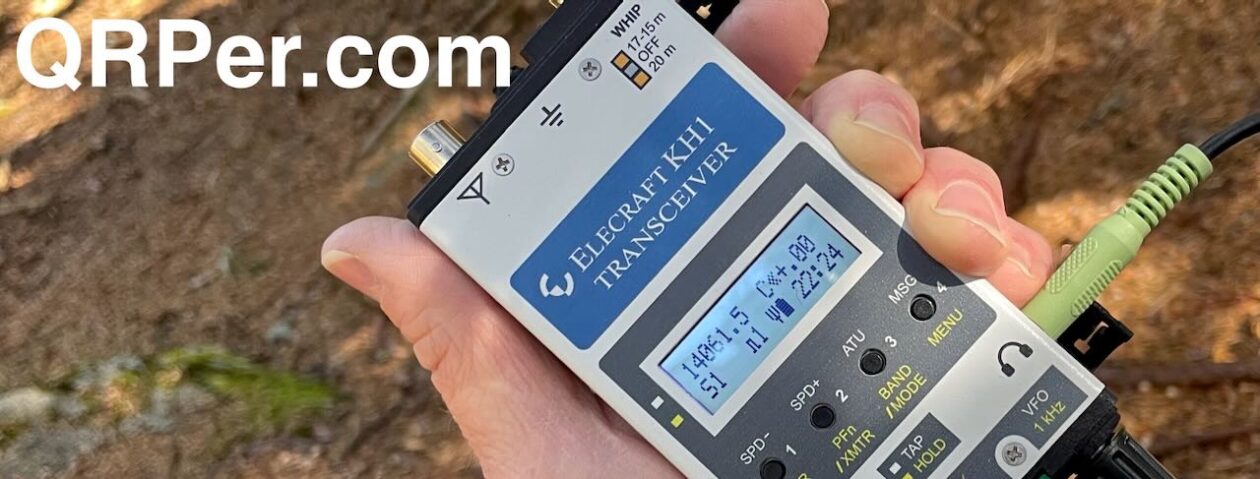by Matt (W6CSN)
The Radio
The QMX by QRP Labs is a five band, multi-mode radio introduced by Hans Summers G0UPL at FDIM in 2023. The QMX is the next logical step in the radio development journey at QRP Labs, bringing together the innovative approach to FSK modes like FT8 from the QDX and the CW performance of the QCX series. This is all done in same enclosure as the QCX-Mini which is not much larger than a deck of playing cards.

The keen observer will notice that the QMX also sports a built-in microphone which, along with associated circuitry, supports future introduction of voice modes by way of firmware update. Other notable features include SWR metering with protection as well as solid-state “PIN” diode T/R switching, plus the option for “high band” coverage of 20 through 10 meters in addition to the original 80m-20m version.
Most hams have, at one point or other, forgotten to throw the antenna switch, adjust the tuner, or even connect an antenna before transmitting. The SWR meter and protection really sets the QMX apart from earlier QRP Labs radios. There are plenty of sad tales on the QRP-Labs forums from QCX or QDX users that “smoked” the BS170 mosfet finals in a moment of operating into a badly mismatched load. It’s remarkably easy to do, ask me how I know!
The Build
Based on experience with the QCX-Mini and having put together several QDX’s, I admit to being hesitant to starting assembly of this radio. The level of integration in the QMX as a multi-band, multi-mode unit is probably the highest yet to come out of QRP Labs. The components that were merely small in earlier radios are absolutely tiny in the QMX, specifically the LPF toroidal cores. The main board, internal switching power supplies, display, and controls board are all sandwiched together in a tight fit for the custom enclosure.

The build started with a slow and methodical approach of doing a little bit each day and working in the morning when my mind was fresh and there was good light on my workbench, a.k.a. the dining room table.
The first “disaster” happened when performing the factory recommended modification to Revision 2 boards shipped in 2023. The mod calls for a protection diode to be installed across a SMD mosfet. Several leaded 1N4148 diodes were available in my “junque” box so I attempted to carefully fit one of these in the right position on the board. While soldering the diode in place I managed to lift C508, a microscopic .1uF SMD capacitor, clean off the board!

Given the tools at my disposal, there was no way I was going to be able to get that capacitor back into place. Therefore, I grabbed a standard through hole .1uF cap and painstakingly got it connected in the right place, verified by lots of continuity testing.
Once finished with all the electronic components on the main board, I was feeling pretty cocky and also the completion of the project was more clearly in view. The cautious and methodical approach gave way to a faster build pace, which directly lead to the second “disaster.” While installing the headers that connect the main board to the display board, I failed to CAREFULLY READ THE ASSEMBLY MANUAL and soldered the male pin headers where I should have installed the female sockets!
This misstep might have ended the project right then and there if I had not at some point in the last year bought a proper desoldering tool. This is not an expensive automatic vacuum pump powered solder re-work stations, but rather a heating tip and manually actuated solder sucker built into one tool. Twenty-two unsoldered connections later, we were back on track. Continue reading QMX – From Kit to Field!


